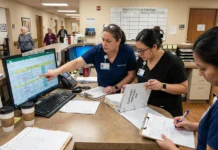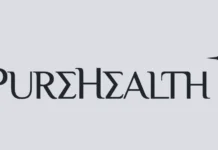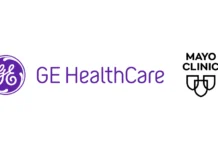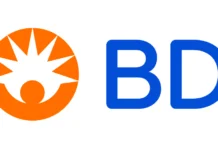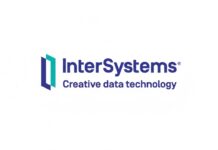Healthcare executives occupy a paradoxical position in the digital age. Their organizations demand visibility and engagement on social media platforms to build institutional brands, communicate with communities, and establish thought leadership. Yet simultaneously, their roles demand unwavering commitment to patient privacy, HIPAA compliance, and protection of sensitive healthcare information. This tension between professional visibility and healthcare executive social media privacy creates complex challenges that traditional leadership training rarely addresses.
The proliferation of social media platforms has fundamentally altered how healthcare leaders communicate, network, and build professional reputations. LinkedIn profiles showcase career achievements and industry expertise. Twitter feeds share healthcare insights and organizational announcements. Facebook pages connect with community members. Instagram presents organizational culture and patient-centered messaging. Each platform offers valuable opportunities for executive visibility and institutional communication. Yet each also presents distinct privacy risks, compliance challenges, and personal security vulnerabilities that healthcare executives must navigate with sophistication and intentionality.
Understanding the Unique HIPAA Social Media Challenge
The intersection of HIPAA compliance and social media creates unprecedented complexity for healthcare executives. Unlike many industries where social media represents primarily a professional or personal communication channel, healthcare leaders operate within regulatory frameworks that treat patient information with extraordinary protections. Any inadvertent disclosure of protected health information, even in seemingly innocuous contexts, violates HIPAA regulations and exposes organizations and individuals to significant penalties.
The Office for Civil Rights actively investigates social media HIPAA violations, resulting in substantial settlements and reputational damage. Healthcare executives discussing organizational challenges, patient care scenarios, or operational issues on social media can inadvertently disclose protected information or create impressions of careless data handling. Even vague references to patient conditions, treatment outcomes, or organizational patient populations can constitute HIPAA violations if they could potentially identify individuals.
Healthcare executives must recognize that HIPAA social media compliance extends beyond obvious protections like never naming patients or sharing identifiable information. Discussions of specific medical conditions, treatment protocols, or outcomes associated with particular facilities or time periods can constitute violations. Photographs showing identifiable patients, family members, or medical settings require careful consideration of consent and privacy implications. Comments responding to patient posts or reviews must avoid confirming patient-doctor relationships or discussing medical details.
The Professional Boundary Challenge in Digital Spaces
Healthcare executives face distinctive challenges in maintaining professional boundaries on social media platforms designed to blur the distinction between personal and professional personas. Colleagues, employees, and industry contacts increasingly expect connectivity through social media. Family members may find and follow professional accounts, expecting access to personal insights. Patients and community members may attempt to connect with executives through personal accounts, blurring healthcare professional boundaries.
Managing these dynamics requires thoughtful platform selection, clear boundary-setting, and explicit policies about acceptable engagement. Many healthcare leaders benefit from maintaining separate professional and personal social media accounts, with different privacy settings and connection policies for each. Professional accounts might emphasize healthcare expertise, industry commentary, and organizational updates while maintaining strict professional standards. Personal accounts can enable more casual connection with friends and family while maintaining appropriate privacy boundaries.
The challenge intensifies when healthcare executives participate in social media discussions about healthcare policy, patient advocacy, or controversial healthcare topics. These discussions naturally attract patient comments, family member engagement, and intense emotional responses. Executives must respond professionally without disclosing confidential information, confirming patient relationships, or compromising HIPAA compliance. What appears as straightforward engagement with patients or community members can quickly transform into regulatory violations if executives inadvertently confirm healthcare relationships or discuss patient-specific information.
Personal Security and Privacy Implications
While HIPAA compliance represents the most obvious social media concern for healthcare executives, personal security and privacy risks deserve equal attention. Social media platforms generate comprehensive digital footprints that adversaries exploit for social engineering, identity theft, physical threats, and reputational damage. Healthcare executives’ public visibility makes them particularly attractive targets for attackers seeking leverage into organizational systems or information.
Detailed social media profiles revealing family relationships, home locations, vacation patterns, and social networks provide attackers with extensive reconnaissance information. Healthcare executives sharing professional achievements and career progression establish credibility that can be exploited for social engineering attacks targeting their organizations. Posts discussing organizational challenges inadvertently reveal vulnerability areas that competitors or adversaries can exploit. Photos and location tags reveal routines and locations that inform physical security threats.
The healthcare executive social media privacy dimension extends beyond personal security to encompass family safety and organizational resilience. Executives’ social media activities affect not only their own vulnerabilities but also family member exposure through shared accounts, tagged photographs, and location information. Comments on executive posts may reveal family relationships, professions, or personal details that create vulnerability for family members. Extended social networks connected through executive accounts become reconnaissance targets for sophisticated attackers.
Navigating Patient Advocacy Group Engagement
Patient advocacy groups increasingly engage with healthcare executives through social media platforms, seeking to raise awareness about specific conditions, promote policy changes, or challenge organizational practices. These engagements represent valuable opportunities for healthcare leaders to demonstrate commitment to patient-centered care, build community relationships, and understand patient perspectives. Yet they simultaneously create risks if executives inadvertently acknowledge patient relationships, discuss specific cases, or confirm proprietary treatment information through public social media interactions.
Healthcare executives should establish clear policies about engaging with patient advocacy groups through social media. Direct messages may provide safer channels for substantive discussions than public comments visible to all followers. Organizations might designate specific communications professionals or public relations staff to handle patient advocacy group engagement rather than asking executives to respond directly. When executives do engage, they should focus on general principles, organizational values, and supportive messaging rather than case-specific discussions or treatment details that could constitute HIPAA violations.
Crisis Communication and Social Media Response
Healthcare leaders increasingly rely on social media for rapid institutional communication during crises, emergency notifications, and critical incidents. Social media enables immediate outreach to large audiences without depending on traditional media or organizational communication infrastructure. Yet crisis communication through social media creates heightened risks of inadvertently disclosing confidential patient or organizational information under pressure and time constraints.
Healthcare executives should develop pre-planned crisis communication protocols addressing which messages will be communicated through social media, who has authority to post, what information will never be shared, and how messages will be reviewed before posting. These protocols should identify specific language that protects privacy while communicating necessary information. During actual crises when information flows rapidly and emotions run high, these pre-established protocols provide essential guardrails preventing hasty posts that violate HIPAA compliance or compromise organizational interests.
Developing Comprehensive Social Media Policies
Organizations supporting healthcare executive social media privacy should establish comprehensive policies addressing appropriate platform use, privacy protection, patient relationship boundaries, and compliance requirements. These policies should distinguish between organizational accounts where the institution bears responsibility for content and personal executive accounts where individuals maintain greater discretion. Policies should explicitly address what constitutes appropriate versus prohibited content, consequences for violations, and training requirements for executive social media use.
Effective policies recognize that social media enables valuable professional development, relationship-building, and organizational communication when used appropriately. Rather than implementing restrictive policies that eliminate executive social media presence entirely, organizations should provide guidance enabling appropriate engagement. Policies should include specific examples of HIPAA violations, acceptable patient engagement scenarios, appropriate disclosure of organizational information, and professional boundary maintenance. Regular training ensures executives understand evolving platform features, privacy risks, and compliance obligations.
Building a Culture of Healthcare Executive Social Media Privacy
Sustainable healthcare executive social media privacy protection requires organizational culture that recognizes both the value of appropriate social media engagement and the critical importance of compliance and personal security. Healthcare executives who understand privacy risks and HIPAA requirements as inherent to leadership responsibilities rather than external constraints are more likely to navigate social media appropriately. Organizations demonstrating senior leadership commitment to social media compliance through modeling appropriate behavior, participating in training, and emphasizing privacy values create cultures where executives prioritize these concerns.
Healthcare organizations should provide accessible resources supporting executive social media privacy including platform-specific guidance, privacy setting recommendations, examples of compliant versus non-compliant content, and decision trees for evaluating appropriate engagement. Security awareness training addressing social media specifically equips executives with knowledge and confidence for navigating digital communication safely. Peer support networks where executives discuss social media challenges and share experiences normalize privacy concerns and facilitate collective learning.
Conclusion
Healthcare executives navigating social media in the compliance-intensive healthcare environment face distinctive challenges requiring sophisticated understanding of HIPAA requirements, professional boundary maintenance, and personal security protection. The opportunities social media provides for professional visibility, organizational communication, and community engagement are genuine and valuable. Yet realizing these benefits while protecting patient privacy, maintaining regulatory compliance, and preserving personal security demands thoughtful strategy, organizational support, and sustained commitment to healthcare executive social media privacy. Leaders who approach social media engagement with clear guidelines, comprehensive training, and organizational policies position themselves to harness digital platforms’ benefits while protecting the privacy, compliance, and security imperatives fundamental to healthcare leadership.





